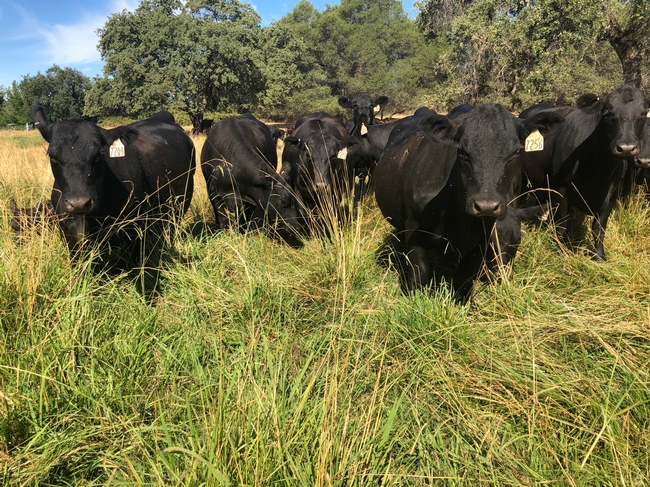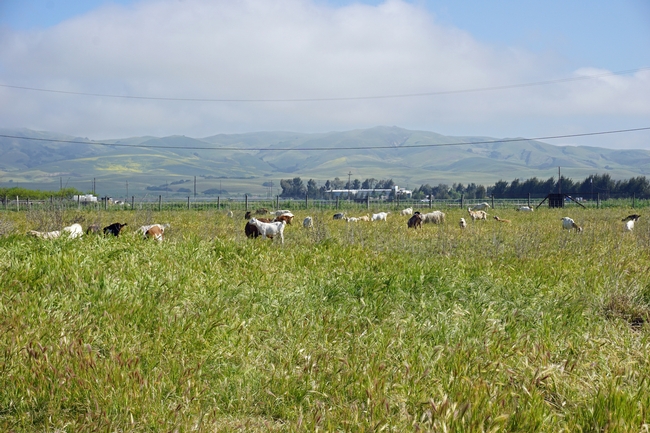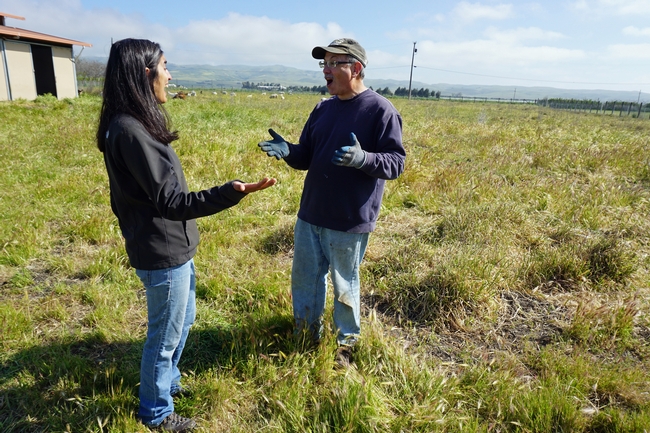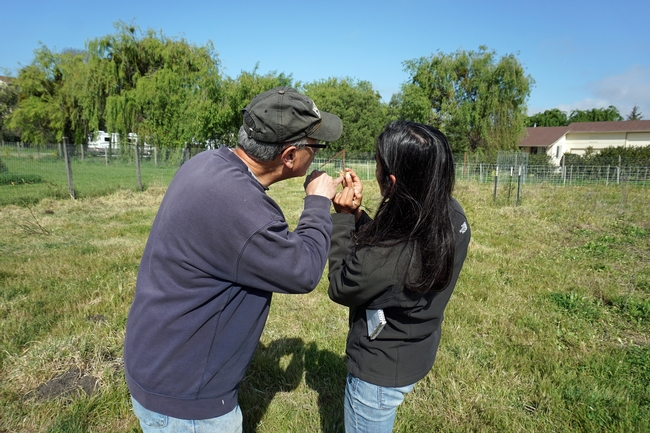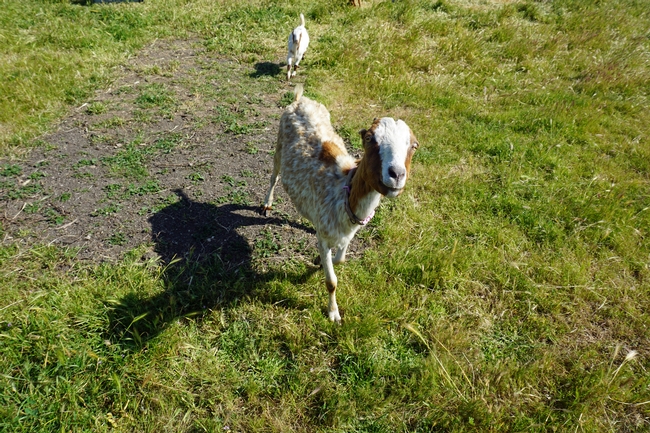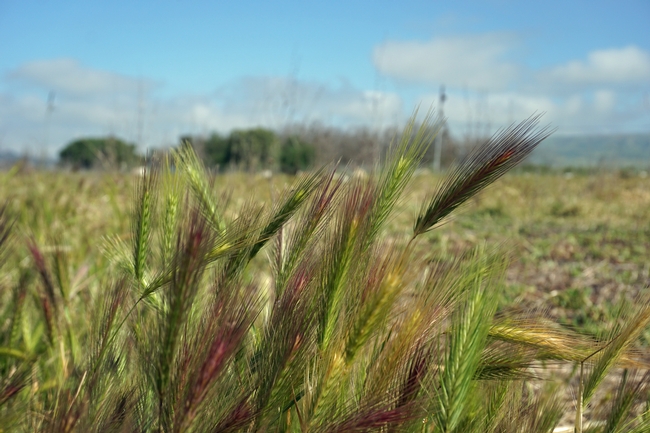Posts Tagged: pasture
New UC studies outline costs of producing irrigated pasture in the Sierra Nevada foothills
Two new studies on the costs and returns of establishing and producing irrigated pasture in the Sierra Nevada Foothills have been released by UC Agriculture and Natural Resources' Agricultural Issues Center. Ranchers in Nevada, Placer and surrounding counties may find the cost estimates useful for planning.
Based on 40 acres of leased ground, the studies focus on establishment by tilling the soil, using conventional cultural practices and re-establishment of pasture using no-till cultural practices. The two separate studies, by Dan Macon, UCCE livestock and natural resources advisor, and Donald Stewart of the Agricultural Issues Center, estimate the cost of establishing or re-establishing a pasture and producing pasture over its 30-year life span.
There are two methods of establishing a pasture. One method uses conventional cultural practices, destroying the existing pasture and preparing the soil, or seed-bed, using conventional tillage practices.
The other no-till method of re-establishing the pasture uses high-intensity grazing and herbicides to destroy the existing pasture and plant new pasture using a no-till seed drill.
Their analysis reports the differences of machinery costs and methods. The reported prices for materials, equipment and custom services are based on January 2020 figures.
UC Cooperative Extension farm advisors, specialists, grower cooperators and other agricultural associates provided input and reviews. The authors describe the assumptions used to identify current costs for pasture establishment and production, material inputs, cash and non-cash overhead. A ranging analysis table shows profits over a range of prices and hay yields.
The new studies are “2020 - Sample Costs to Establish or Reestablish and Produce Irrigated Pasture in the Sierra Nevada Foothills, Flood Irrigated” and “2020 - Sample Costs to Produce Irrigated Pasture in the Sierra Nevada Foothills, Flood Irrigated.”
Both studies can be downloaded from the UC Davis Department of Agricultural and Resource Economics website at http://coststudies.ucdavis.edu. Sample cost-of-production studies for many other commodities are also available on the website.
For additional information or an explanation of the calculations used in the studies, contact Donald Stewart at the Agricultural Issues Center at (530) 752-4651 or destewart@ucdavis.edu.
For information about irrigated pasture establishment and production in Placer, Nevada, Sutter and Yuba counties, contact UCCE livestock and natural resources advisor Dan Macon at dmacon@ucanr.edu.
San Juan Bautista ‘plant nerd’ connects with UC Cooperative Extension
When San Juan Bautista resident Michael Cent was looking for ways to rehabilitate a large backyard pasture infested with invasive foxtail weeds, he called Devii Rao, the UC Cooperative Extension range and natural resources advisor in San Benito County.
Though Rao works mainly with large, commercial producers, she was intrigued by Cent's well thought out plans to replace foxtail with more desirable plants using sustainable practices. She paid him a visit.
Behind the home sits a two-acre fenced pasture where previous owners grazed llamas and ran horses. The picturesque setting adjoins San Juan Creek and frames a panorama of farm fields and the Diablo Mountain Range. But the tableau was spoiled by fence-to-fence foxtails, an exotic plant that hails from the Mediterranean, offers poor forage value and presents nuisance characteristics.
“The seed heads get stuck in the eyes, ears and noses of livestock and pets,” Rao said. “Foxtail is an annual grass that is difficult to control, but that didn't stop Michael Cent from trying.”
Cent is a pharmacist and self-described plant nerd.
“He turned his foxtail problem into a science project,” Rao said.
As a pharmacist, Cent said he is technically a chemist. “When you look at botany as chemistry, if you drill down into all the chemical reactions going on, it's amazing.”
Cent tested the soil Ph and nutrients. He identified 12 plants that would thrive under his pasture conditions and potentially out-compete the foxtails.
“In my research, much of what I see is not native,” Cent said. “My expectations to plant only natives have tempered. It's good to do within reason, but if a benefit of a non-native species outweighs a lesser advantage of being native, I'll go with the non-native species.”
Cent borrowed a tractor to break up the soil and reseeded by hand with his chosen grass and broad leaf plants. He kept detailed notes.
- Birdsfoot trefoil grew a dense carpet that choked out everything.
- Crimson clover germinated and grew quickly early in the season, but didn't do as well as anticipated.
- Harding grass was seeded specifically to out-compete the bristly ox-tongue, another undesirable plant.
- Chicory has a deep taproot, which helps it survive the dry season.
- Oxalis has come in like gangbusters, even though it wasn't seeded.
At first Cent regularly mowed the pasture to keep down the foxtails, but when the job became forbidding, he contracted with a company to bring in goats to aid control.
After four years of effort to overcome foxtail with grazing goats and seeding plants, Cent has come to a realization.
“I thought I could set it in motion and it would take care of itself,” Cent said. “But it's going to take a sustained effort.”
What drives Cent's devotion to rehabilitating a pasture with extensive plant research and management? The miracle of life, he said.
“The marvel of putting a seed in the ground, managing it and seeing what becomes of it. It's fascinating,” Cent said.
Ranchers view UCCE test plots during spring range tour
UC Cooperative Extension range research was featured at a field day Saturday in Tehama County, reported Julie Johnson in the Corning Observer.
Josh Davy, UCCE advisor in Tehama County, reviewed test plots were 60 varieties of annual and perennial range grasses were growing. Ken Tate, UCCE specialist, and Leslie Roche, postdoctoral researcher, both in the Department of Plant Sciences at UC Davis, gave an update on their long-term grazing research projects evaluating the effects of multiple grazing treatments. Guy Kyser, UCCE specialist in the Department of Plant Sciences at UC Davis, talked about weeds.
Tony Turri, owner of the ranch that hosted the field day, said he has worked extensively with the UC Cooperative Extension.
"There are a lot of factors and organizations that are trying to harm the cattle industry," he said. "Events such as this are important in our ability to stay in cooperation with each other and provided education and information to keep us in business."

Medusahead, barb goatgrass and yellow starthistle were some of the weeds researchers discussed at the field day.

